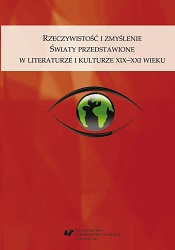„Swojskie” i „obce” w twórczości dla dzieci Wojciecha Widłaka
The Homely and the Foreign in Wojciech Widłak’s Literature for Children
Author(s): Małgorzata Mieszek
Subject(s): Language and Literature Studies, Studies of Literature, Philology, Theory of Literature
Published by: Wydawnictwo Uniwersytetu Śląskiego
Summary/Abstract: The article presents the works by Wojciech Widłak – one of the most popular contemporary authors of children’s literature – in the context of the motifs of the homely andthe foreign present therein. The conducted analysis has shown that in Widłak’s pieces the motifs related to foreignness dominate in terms of both quantity and quality (as they connote more meanings). The “foreign” can function as a synonym for something unknown, dangerous, unwanted, inappropriate, distant, primordial, and instinctual. The author attempts to form the plot and action in such a way that this “foreignness,” with its negative implications, is challenged by the end of the work. As a result of such “domestication,” it becomes something known and thus homely. At times an unknown feeling or object becomes so intriguing that it encourages the characters – and readers – to explore it and to gain knowledge on the subject. The article also describes the way in which Widłak uses the so‑called defence mechanism, which makes it possible for the reader to concretise and get familiarised with the dangers, and, consequently, to domesticate them, restoring the feeling of safety. In turn, the motif of homeliness in Wojciech Widłak’s oeuvre is related to that which is desired, known, and safe. Also the literary devices utilised by the author make it easier for young readers to understand the actions of the characters and the laws in force in the depicted world, they lend colour to the narration, and they make the described reality coherent and harmonious. In such a way, the world from Wojciech Widłak’s short stories is safe and homely, while the situations in which the author places his characters activate non‑adultreaders to take various actions and gain new experiences.
Book: Rzeczywistość i zmyślenie. Światy przedstawione w literaturze i kulturze XIX–XXI wieku
- Page Range: 105-124
- Page Count: 20
- Publication Year: 2017
- Language: Polish
- Content File-PDF

